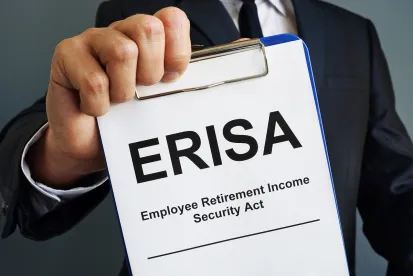In recent years, there have been more than 150 lawsuits alleging violations of ERISA[1] fiduciary obligations that are based on “excessive fees” being charged to participants in defined contribution retirement plans.
A more recent trend also seems to be focusing on the investment performance of target date funds. This Post discusses that litigation trend, and offers some practical advice to employer investment committees or other plan fiduciaries.
Existing Fee Based Lawsuits
For the most part, the existing lawsuits have focused on plan recordkeeping fees. Recordkeeping is a somewhat generic service, thus making recordkeeping fees an easy target. Fee comparisons can be translated into an annual dollar amount. That enables a plaintiff to simply compare the dollar amounts to make a case.
Other fee-based lawsuits have focused on the fees associated with investment option “share classes”. Share class fees are easy targets for plaintiffs because the underlying investment option can be identical between share classes while expenses and fees vary, resulting in differing returns for the same underlying investment option. If the plan is simply not offering a less expense “share class”, the plaintiff has a case.
Target Date Fund Cases
More recently, there has been a spate of new lawsuits directed at the “target date” retirement funds being offered in plans.
Some of those lawsuits seem to have allegations that are primarily excessive fee based in nature.[2] Similarly, in another case, the claim is that the fees associated with custom, actively managed target date funds are excessive because there are cheaper “off the shelf” funds available.[3]
However, the Plaintiffs are going a step further in a case against United Healthcare.[4] In that case, the plaintiffs are arguing that a fiduciary violation has occurred because of poor investment performance of the plan’s target date funds.
The fundamental basis for this claim seems to rest on an examination of -year average returns of the target date funds that are in the plan, compared to certain indices that measure fund performance and other target date funds. For example, the complaint looks at the “2040” target retirement date funds of various investment providers, and compares the investment results over a five-year period.
The Plaintiffs argue that the United Healthcare target date funds should have been removed from the plan after their poor performance over an initial five-year period, as a prudent fiduciary should consider removal of investment options which “on average, underperform their benchmarks or peer universe over rolling three- or five-year periods”.
This approach is premised on the same type of analysis that has been pretty successful in the cases about recordkeeping fees and share classes for investment options – just look at the numbers. The Plaintiffs in the United Healthcare case allege that a breach of fiduciary duty occurred because the target date funds in the plan performed significantly worse than most “peer” funds over the last several years in terms of growth. However, when target date fund performance is being measured, this kind of simple quantitative analysis is far from adequate.
Assessing Target Date Fund Performance
Assessing the investment performance of target date funds is a lot more complicated than meets the eye. Apples to Apples comparisons of target date funds are not easy to make. The devil is in the details.
For example, some funds manage the participants’ assets “to” an expected retirement date. After that time, the fund’s asset allocation might not undergo any further changes. Meanwhile, other funds manage the assets “through” an expected retirement date (e.g., 15 years after normal retirement age). It is only after that time that the fund’s asset allocation might become more conservative and stable. Expected retirement dates can vary too.
Similarly, target date funds typically have “glide paths” for de-risking investments as the plan participant ages over time. A more conservative de-risking approach (e.g., less equity) should result in lower overall investment returns than other funds that have a more aggressive approach to investing (e.g., more equity). However, a lower investment return would not necessarily mean that the fund was mismanaged, since the returns for each fund ought to be commensurate with the risk.
Thus, simply comparing investment returns between different target date funds does not tell the whole story.
Other Fiduciary Considerations
The foregoing thoughts point to another, critically important, aspect of fiduciary law that is being completely ignored when a plaintiff’s allegations are simply based on investment result numbers.
Investing is not a simple endeavor. There will never be a clear-cut approach to the “right thing to do”. Accordingly, what the law generally requires is that a fiduciary engage in a thorough decision making process before making an investment decision. If the fiduciary does so, the fiduciary might not be deemed to have violated his or her fiduciary duty, simply because the outcome of that decision is less than perfect.[5]
Some Practical Advice
Here is some practical advice for employer investment committees or other plan fiduciaries.
First, when the committee or other plan fiduciary is selecting target date retirement funds, carefully consider the glide paths employed by the target date funds, and how the funds will be managed in terms of asset allocation and risk tolerance. Then, carefully document what was reviewed, and the rationale for selecting the plan’s target date funds.
Subsequently, when the committee or other plan fiduciary is examining the plan’s target date fund performance over time, be certain to take into consideration the funds’ glide paths, asset allocations and risk tolerances. Again, as always, robust documentation of those ongoing reviews is advisable.
If the committee or other plan fiduciary does not possess the expertise to make these kinds of decisions, consider hiring a professional investment advisor to assist. Reasonable expenses of investment advisors may be charged to the assets of the plan.
No one can prevent a lawsuit from alleging poor investment performance of a plan’s target date funds. However, taking the foregoing steps should help to demonstrate a thorough decision-making process, and that should help to put an investment committee or other plan fiduciary in a much better position to defend that type of lawsuit.
Finally, any employer that sponsors a retirement plan also should consider purchasing fiduciary liability insurance coverage. A fiduciary liability insurance policy would defend against claims and, if the policy is “nonrecourse”, insulate the employer from liability, up to the policy limits. However, note that assets of the retirement plan cannot be used to purchase nonrecourse fiduciary liability coverage. To acquire nonrecourse coverage, the employer will have to bear the cost of the insurance from its general assets.
FOOTNOTES
[1] The Employee Retirement Income Security Act of 1974, as amended, 29 U.S.C. §1001 et seq.
[2] Blackmon v. Zachry Holdings, Inc., W.D. Tex., No. 5:20-cv-00988, motion for preliminary settlement approval 1/21/22
[3] Locascio v. Fluor Corp., N.D. Tex., No. 3:22-cv-00154, complaint 1/24/22.
[4] Snyder v. UnitedHealth Grp., Inc., D. Minn., No. 0:21-cv-01049, stipulation on class certification 1/11/22.
[5] See, e.g., Pizarro v. The Home Depot, Inc., 2019 U.S. Dist. LEXIS 185808 (N.D. Ga. 2019), citing to Tibble v. Edison Int’l, 575 U.S. 523, at 535 (20150 and Karg v. Transamerica Corp., 2019 U.S. Dist. (N.D. Cal. 2019), citing Braden v. Wal-Mart Stores, Inc., 588 F.3d 585, at 595 (8th Cir. 2009).





 />i
/>i

